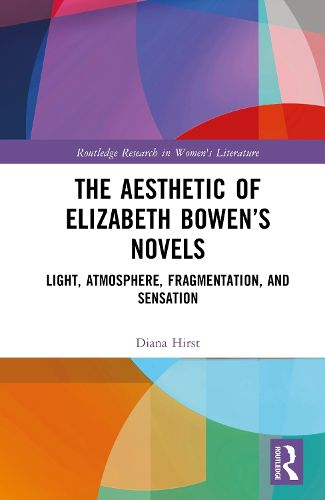Readings Newsletter
Become a Readings Member to make your shopping experience even easier.
Sign in or sign up for free!
You’re not far away from qualifying for FREE standard shipping within Australia
You’ve qualified for FREE standard shipping within Australia
The cart is loading…






This is the first monograph to evaluate Elizabeth Bowen's 'verbal painting', and the first to acknowledge the influence of the East Kent landscape in her novels. Drawing on the work of critics and on Bowen's own essays and articles, Hirst introduces Bowen to the reader, outlining the range of her literary work and elaborating on Bowen's advice that the reader needs to work at understanding her prose. She examines Bowen's use of light and the eye from the perspective of neuropsychology, before considering the importance to Bowen of place. She discusses her 'verbal painting', drawing parallels with different genres (Post-Impressionism, Surrealism, Futurism, Collage) and artists (Paul Cezanne, Pierre Bonnard, Edouard Vuillard, Giorgio de Chirico, Umberto Boccioni, Paul Nash), and the films of French Left Bank Cinema directors (Alain Resnais, Jean Cocteau). Finally, using the neologism 'dyslocution' for Bowen's fragmented syntax, she suggests this has been influenced by French syntax and by poetic techniques, all of which combine in a Cubist style.
$9.00 standard shipping within Australia
FREE standard shipping within Australia for orders over $100.00
Express & International shipping calculated at checkout
Stock availability can be subject to change without notice. We recommend calling the shop or contacting our online team to check availability of low stock items. Please see our Shopping Online page for more details.
This is the first monograph to evaluate Elizabeth Bowen's 'verbal painting', and the first to acknowledge the influence of the East Kent landscape in her novels. Drawing on the work of critics and on Bowen's own essays and articles, Hirst introduces Bowen to the reader, outlining the range of her literary work and elaborating on Bowen's advice that the reader needs to work at understanding her prose. She examines Bowen's use of light and the eye from the perspective of neuropsychology, before considering the importance to Bowen of place. She discusses her 'verbal painting', drawing parallels with different genres (Post-Impressionism, Surrealism, Futurism, Collage) and artists (Paul Cezanne, Pierre Bonnard, Edouard Vuillard, Giorgio de Chirico, Umberto Boccioni, Paul Nash), and the films of French Left Bank Cinema directors (Alain Resnais, Jean Cocteau). Finally, using the neologism 'dyslocution' for Bowen's fragmented syntax, she suggests this has been influenced by French syntax and by poetic techniques, all of which combine in a Cubist style.